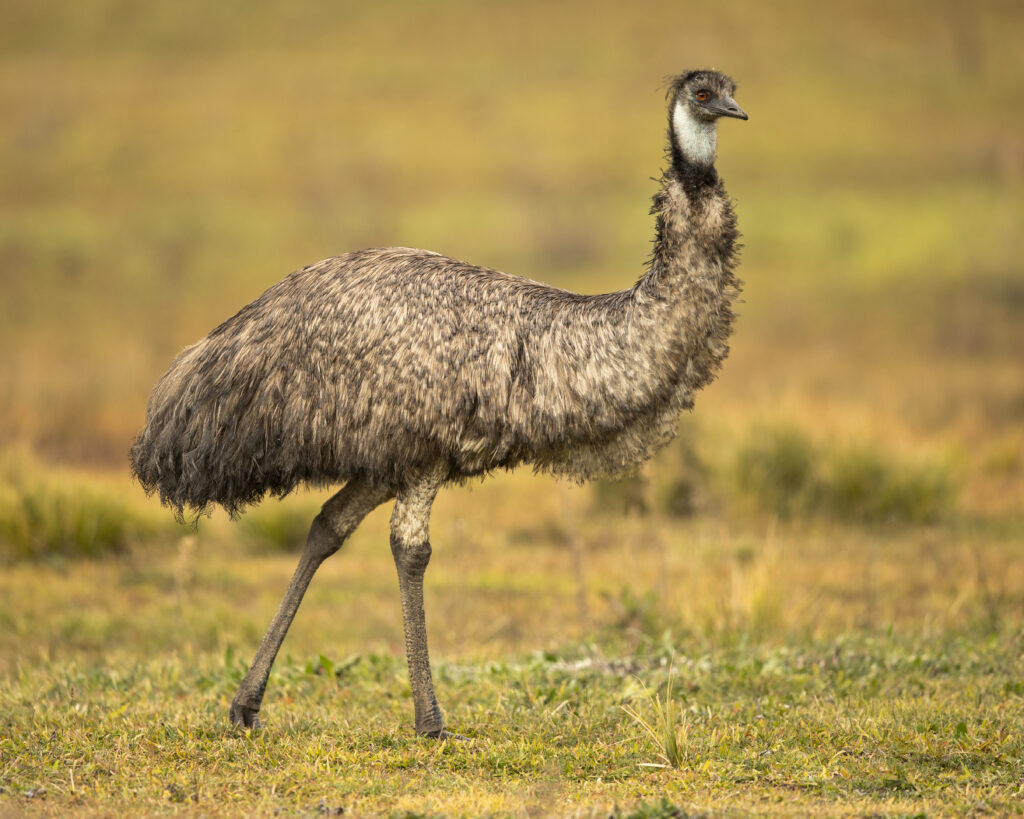The Incredible Running Speed and Survival Power of the Emu

The emu (Dromaius novaehollandiae), Australia’s largest bird and second-tallest bird in the world after the ostrich, is known not only for its size and strength but also for its impressive running speed. Though flightless, the emu has evolved powerful legs and unique adaptations that make it a formidable land runner, able to outrun predators and travel great distances in search of food and water. This long-form article dives deep into the running speed of the emu, how it compares to other animals, and why this ability is key to its survival in Australia’s tough terrain.
1. Emu Speed: How Fast Can They Run?
- The emu can run at sustained speeds of 48–50 km/h (30–31 mph).
- In short bursts, some have been clocked at up to 55 km/h (34 mph).
- That’s as fast as a galloping horse and faster than many land animals—including humans.
Comparison Table: Emu vs. Other Fast Runners
| Animal | Top Speed |
|---|---|
| Emu | 48–55 km/h (30–34 mph) |
| Ostrich | 70 km/h (43 mph) |
| Human (Usain Bolt) | 37.6 km/h (23.4 mph) |
| Kangaroo | 40–50 km/h |
| Lion | 80 km/h (but only short bursts) |
2. The Anatomy Behind the Speed
The emu’s ability to run at high speeds is the result of a remarkably efficient body design:
- Long, powerful legs with three forward-facing toes help distribute weight and increase balance.
- A unique arrangement of tendons and muscles gives them spring-like power, reducing energy use at high speed.
- They have strong pelvic and thigh muscles, similar to running mammals.
- Emus lack kneecaps, which actually increases stride efficiency.
Fun Fact: Emus take 2.5-meter (8-foot) strides when sprinting—like running on pogo sticks with wings.
3. Built for Distance, Not Just Speed
- Emus are endurance runners, able to travel long distances at moderate speeds without tiring.
- This ability helps them migrate across Australia’s vast, dry landscapes.
- In search of food or water, emus may walk/run hundreds of kilometers.
Their cardiovascular and muscular systems allow for aerobic endurance, not just short sprints like predators.
4. Why Do Emus Run?
Emus use their speed for several survival purposes:
- Escaping predators: Wild emus face threats from dingoes and wedge-tailed eagles. Speed and maneuverability are their first lines of defense.
- Foraging: Emus are nomadic omnivores, traveling vast distances in search of fruits, seeds, flowers, insects, and small animals.
- Mating and nesting: During breeding season, movement increases as they seek mates and ideal nesting grounds.
Their high speed is paired with a zig-zag running pattern, confusing pursuers and helping them avoid capture.]

5. Speed and Evolution: A Flightless Advantage
- Emus lost the ability to fly millions of years ago but gained powerful running ability instead.
- Like their relative, the ostrich, emus adapted to life on open plains by trading wings for running legs.
- This evolutionary shift likely came from the absence of natural large predators in early Australia—until humans and dingoes arrived.
Their speed is now essential to survival, compensating for the lack of aerial escape.
6. Emu Speed in Culture and Competition
- In Australia, the emu is celebrated as a national symbol, even appearing on the coat of arms.
- Their speed and power have become a metaphor for resilience, especially in the dry Outback.
- Emus are featured in Aboriginal storytelling, often associated with the sun and movement.
- In rare cases, emu races have been held, often in novelty settings, showcasing their natural speed.
7. Emu vs. Humans: Who Wins the Race?
- While elite sprinters like Usain Bolt can briefly hit 37.6 km/h, no human can match the sustained speed of an emu.
- Over longer distances, an emu’s efficiency means it could easily outrun even the fittest human athlete.
- Unlike humans, emus don’t sweat—they control heat through panting and body posture.
Conclusion: If you tried to chase an emu, you’d lose—unless you had a car or bike.
8. Emu Locomotion and the Future
- Scientists study emus to understand avian biomechanics, particularly how flightless birds adapt to land speed.
- Insights from emus have even influenced robotic movement in bipedal machines.
- With changing climates, emus’ ability to roam and outrun threats will be key to their continued survival in the wild.
Conclusion: The Sprinter of the Outback
Though grounded, the emu is a remarkable runner, equipped with all the tools to thrive in Australia’s demanding environments. Its speed, endurance, and agility make it more than just a fast bird—it’s an evolutionary success story. While it may not fly, the emu proves that sometimes, running is the best way to rise.



